Though this might feel like a statement of some hyperbole considering the hobby’s docile reputation, we’ll make it anyway; embarking on your sewing journey can be as thrilling as it is daunting.
One of the most crucial steps, and often the most overwhelming, is selecting the right fabric. But fear not, budding seamstresses; we’re here to guide your dexterous hands, essential, to demystify the process, and to help you navigate the colourful labyrinth of fabric shops – both in person and online – with confidence. With that in mind, here’s the seamstress’s essential guide to buying fabric.
Understanding Fabric Basics
Before you dive headfirst into the world of textiles, it’s important to understand the basics. Fabrics are categorised into three main types: woven, knit, and non-woven. Woven fabrics, like cotton or silk, are created by interlacing two sets of yarns at right angles. Knit fabrics, such as jersey, are made by interlocking loops of yarn, resulting in a stretchy material. Non-woven fabrics, like felt, are produced by bonding or felting fibres together.
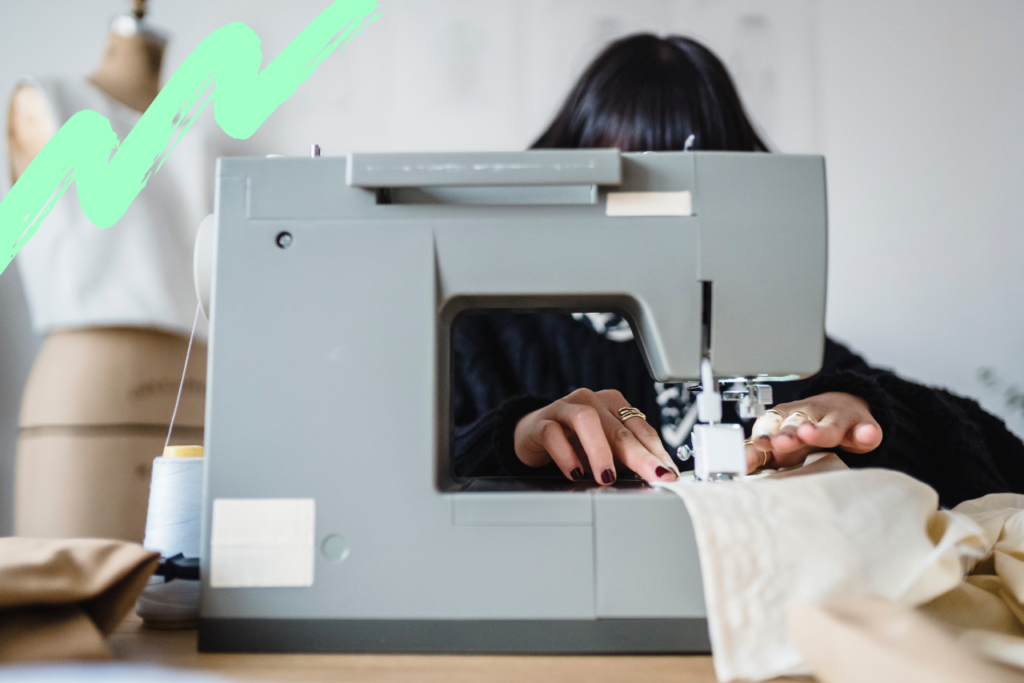
The Importance of Fabric Selection
Choosing the right fabric can make or break your sewing project. The fabric dictates not only the look and feel of your garment but also how it drapes, how easy it is to sew, and how it should be cared for. It’s essential to consider the fabric’s weight, drape, stretch, and care instructions when selecting the perfect textile for your project.
Decoding Fabric Labels
Fabric labels are a treasure trove of information. They can tell you the fabric’s composition, width, care instructions, and sometimes even suggest what it’s best used for. For instance, a label might indicate that a fabric is 100% cotton, 45 inches wide, machine washable, and ideal for making summer dresses.
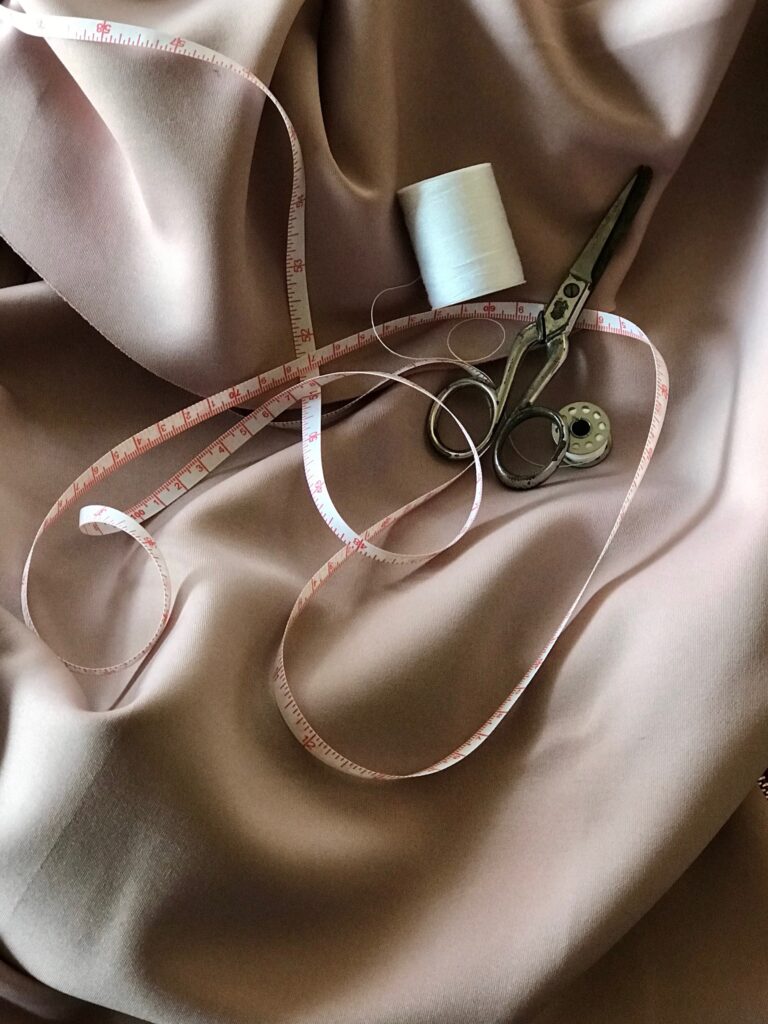
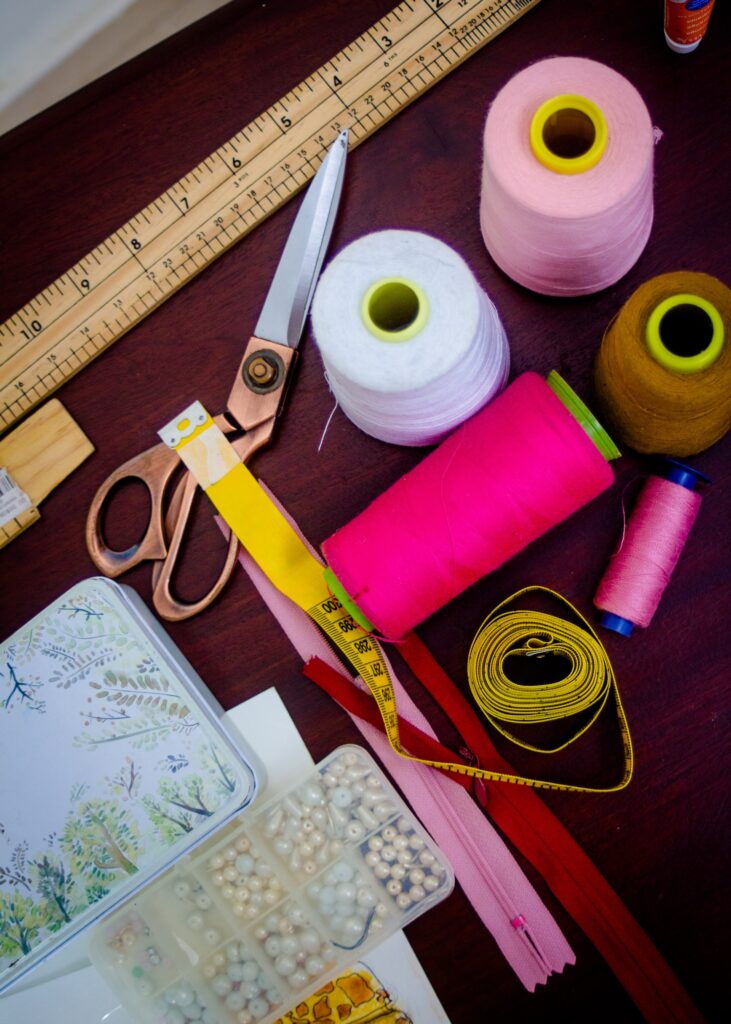
Fabric Shopping Tips For Beginners
- Start Simple: As a beginner, it’s best to start with easy-to-handle fabrics. Cotton is a great choice as it’s sturdy, non-stretchy, and comes in a variety of prints and colours.
- Feel the Fabric: Don’t be shy about touching the fabric. Feel its weight, texture, and drape. This will give you a better idea of how it will behave when you’re sewing and wearing it.
- Buy a Little Extra: It’s always a good idea to buy a bit more fabric than your pattern calls for. This allows for mistakes and gives you some wiggle room if you decide to make adjustments.
- Ask for Help: Don’t hesitate to ask the shop staff for advice. They’re usually knowledgeable about their products and can guide you towards the best choices for your project.
- Invest in Quality: While it might be tempting to go for the cheapest option, investing in high-quality fabric will make your sewing experience more enjoyable and your finished product more durable. The same principle applies to equipment – researching the best embroidery machines or sewing tools before purchasing will save you money and frustration in the long run.

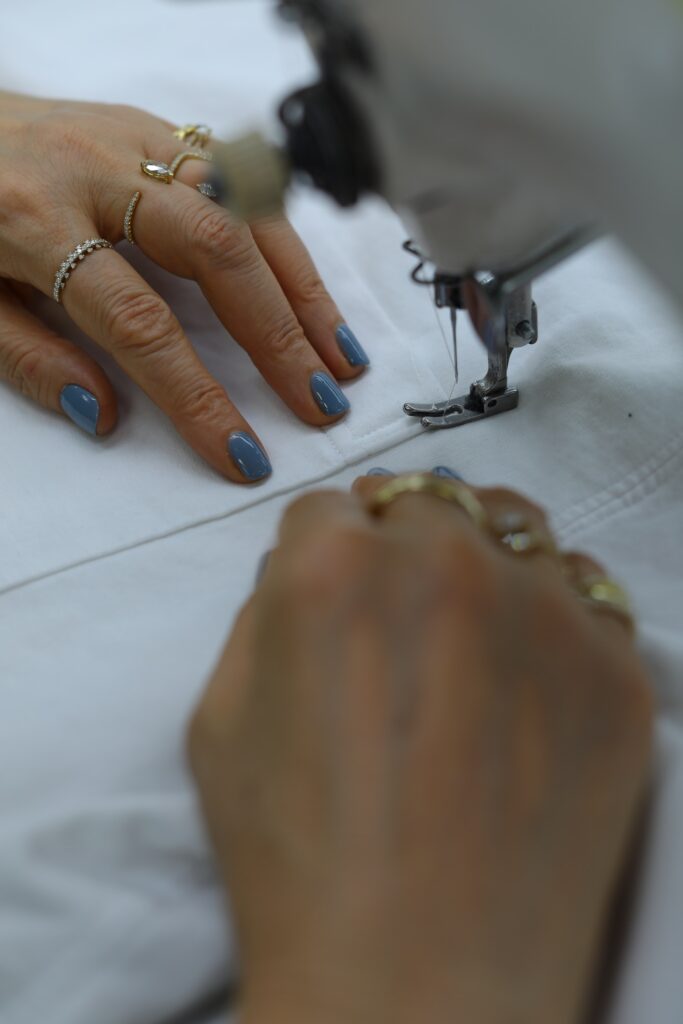
Is It Wise To Buy Fabric Online?
In the digital age, the convenience of online shopping is undeniable. But when it comes to buying fabric, is it a wise choice? The answer is both yes and no, and here’s why.
The Pros Of Buying Fabric Online
Variety: Online fabric stores often offer a wider range of fabrics than physical stores. You can find unique prints, rare materials, and a vast array of colours at your fingertips.
Convenience: Shopping online allows you to browse and compare fabrics at any time, from the comfort of your own home. It’s a great option for those who live far from fabric shops or have busy schedules.
Price: Online shops often have sales and discounts that physical stores can’t match. You can also compare prices across different websites to ensure you’re getting the best deal.
Online Reviews: Buying fabrics online gives us the chance to assess a whole host of reviews, giving valuable insights into the fabric’s quality and likeness to its online representation, and, ultimately, letting you know if you’re in the company of a reputable and user-friendly online fabrics shop.
The Cons of Buying Fabric Online
Touch and Feel: The biggest drawback of buying fabric online is that you can’t touch or feel the fabric. You won’t be able to assess the weight, drape, or texture, which are crucial factors in choosing the right fabric.
Colour Accuracy: Colours can look different on screen due to monitor settings, which means the fabric you receive might not be the exact shade you expected.
Shipping Costs: While you might find great deals online, remember to factor in shipping costs. These can sometimes make your purchase more expensive than buying from a local store.
Buying fabric online can be a wise choice if done carefully. By considering the pros and cons and following these tips, you can enjoy the convenience of online shopping while still making informed fabric choices.
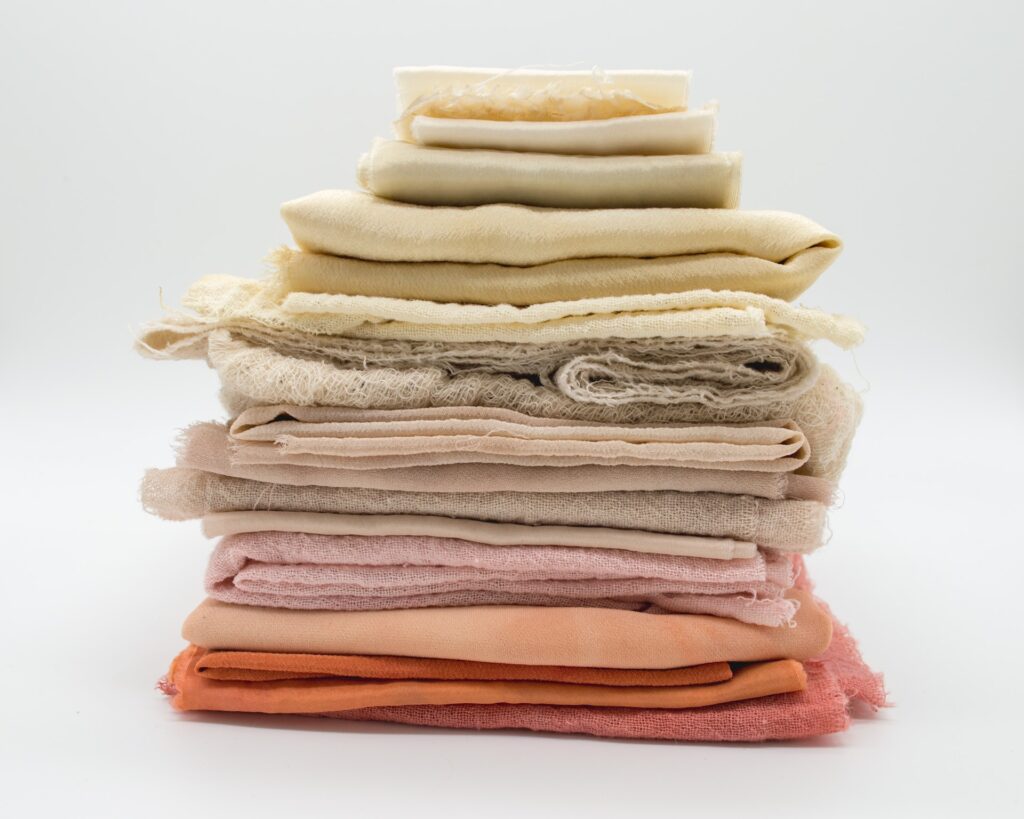
Essential Sewing & Fabric Terminology For Beginners
As you delve into the world of sewing, you’ll encounter a vast range of sometimes intimidating terms that might seem like a foreign language to sewing beginners. To help you navigate this new terrain, here’s a glossary of essential sewing and fabric terminology that every beginner should know.
Selvage: This is the tightly woven edge of the fabric that runs parallel to the warp (lengthwise grain). Selvage doesn’t fray, making it a useful guide when cutting out your pattern pieces.
Grain: The direction of the threads in a fabric. The lengthwise grain (warp) runs parallel to the selvage, and the crosswise grain (weft) runs perpendicular to it. The fabric’s grain can affect how it drapes and stretches.
Bias: This is the diagonal direction of a fabric. Fabric cut on the bias has more stretch and drape, which is useful for certain garment types like bias-cut dresses.
Drape: This term refers to how a fabric hangs or flows. Fabrics with good drape, like silk, will flow and conform to the body, while fabrics with less drape, like cotton, will hold their shape.
Weight: This refers to the heaviness of a fabric. Light-weight fabrics like chiffon are suitable for delicate, flowing garments, while medium to heavy-weight fabrics like denim are used for more structured pieces.
Thread Count: This is the number of threads per square inch of fabric. A higher thread count usually indicates a denser, higher quality fabric.
Notions: These are the small items used in sewing, such as buttons, zippers, and thread.
Seam Allowance: This is the area between the edge of the fabric and the stitching line. It’s important to follow the seam allowance specified in your pattern to ensure your garment fits correctly.
Backstitch: This is a technique used to secure the start and end of a seam. It involves sewing a few stitches forward, then a few stitches backward.
Basting Stitch: This is a long, loose stitch used to temporarily hold fabric pieces together. It’s usually removed after permanent stitching is applied.
Understanding these terms will not only make it easier for you to follow sewing patterns and tutorials, but it will also enhance your communication with other sewers and fabric sellers. Remember, every seamstress was once a beginner, and with time and practice, you’ll soon be fluent in the language of sewing.
The Bottom Line
Embarking on your sewing journey is an exciting adventure. With this guide in hand, you’re well-equipped to make informed fabric choices that will set your projects up for success, whether you’re looking to start a side hustle or simply make your clothes last longer. Remember, the most important thing is to enjoy the process. Happy sewing!




